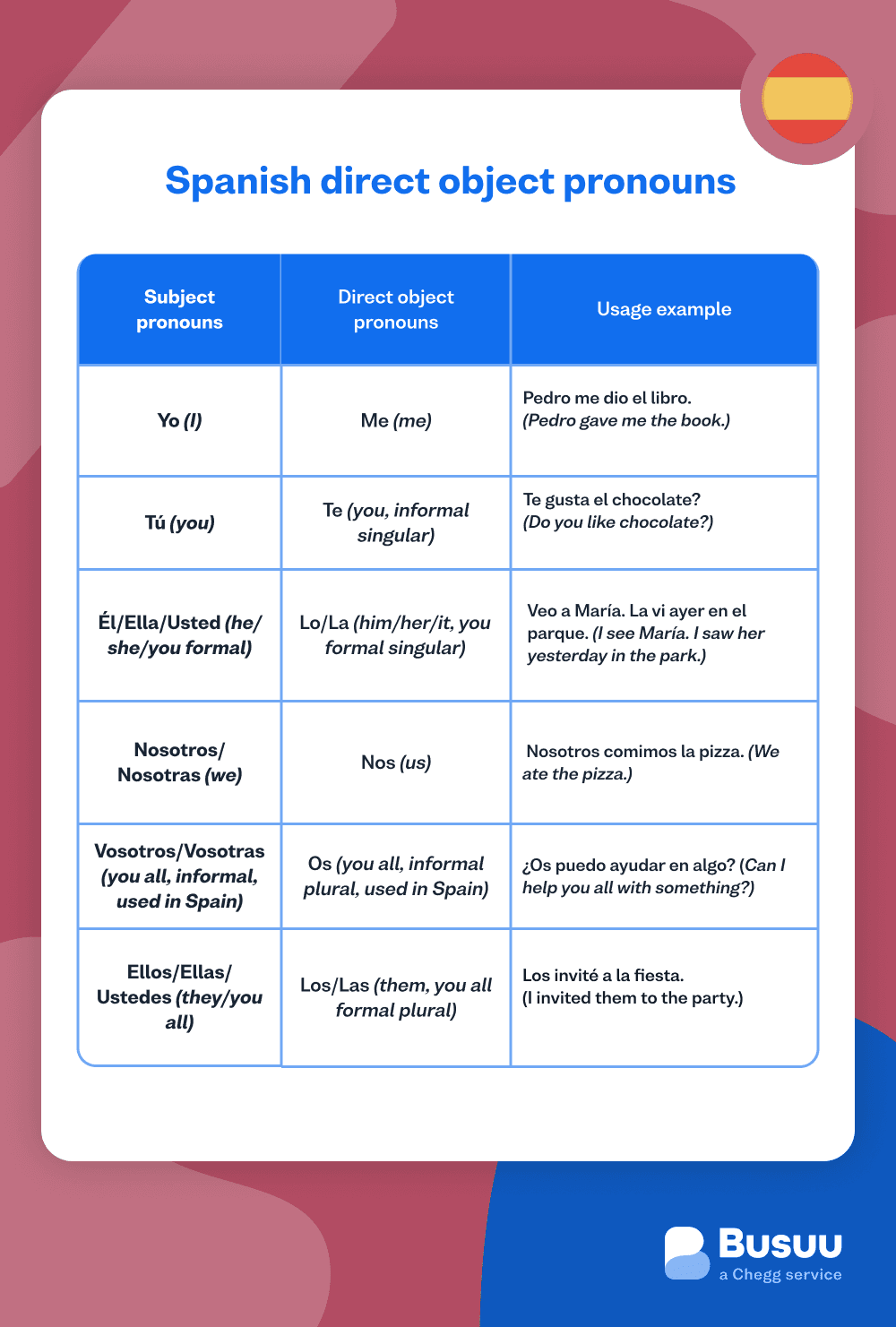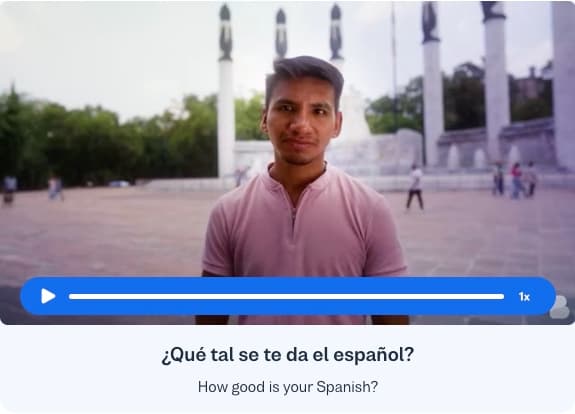I want to learn...
A slightly more advanced concept in the Spanish language is the presence of direct object pronouns. These allow speakers to replace nouns that receive the direct action of a verb. It is especially helpful in conveying important messages or in documents as it helps prevent redundancy.
In this article, we’ll dive into the concept and explain everything you need to know about direct object pronouns, so that you can use them comfortably and sound natural.
Direct object pronoun rules
There are four main rules and one big exception. From placement to matchmaking and even changing the meaning of some verbs, here’s a quick overview:
1. Placing direct object pronouns
In general, direct object pronouns are placed before the verb they are associated with. For instance,“Lo veo”translates to “I see him/it,” where“lo”replaces a masculine singular noun.
However, there are exceptions to this rule. In affirmative commands or imperatives, the direct object pronoun is attached to the end of the verb. For example,“Cómpralo”means “Buy it,” with“lo”appended to the verb“comprar”(to buy).
Also, when the verb is in its infinitive form, the pronoun can be attached to the infinitive itself or placed before the conjugated verb. For instance,“Voy a comerlo”or“Lo voy a comer”means “I'm going to eat it,” with“lo”replacing a masculine singular noun and attached to the infinitive“comer”(to eat).

Table of direct object pronouns
| I (yo) | me |
|---|---|
| You (tú) | te |
| He/she/you (él/ella/usted) | lo/la |
| We (nosotros/as) | nos |
| You (vosotros/as) | os |
| They, you (Ellos/as, ustedes | los/las |
2. Matching direct object pronouns
Direct object pronouns must agree in gender and number with the nouns they replace.
For example, if asked, “¿Viste el libro?” (Did you see the book?), you can answer with “Sí, lo vi” (Yes, I saw it), where “lo” replaces the masculine singular noun“libro.”
Similarly, if someone says, “¿Compraste las flores? ”(Did you buy the flowers?), you can reply with “Sí, las compré” (Yes, I bought them), where “las” replaces the feminine plural noun “flores.”
Double object pronouns
Spanish often uses both direct and indirect object pronouns in the same sentence. In these cases, the indirect object pronoun, representing the person who receives the direct object, precedes the direct object pronoun.
For example, if you say, “Le di el libro a Juan”(I gave the book to Juan), you can replace the direct object “el libro” with “lo” and the indirect object “a Juan” with “le,” resulting in “Se lo di” (I gave it to him).
If you’re a keen reader, you’ll notice that “le” has been turned into “se.”This is known as the “se falso,” or “fake ‘se’” and it happens when “le” and “les” are followed by“lo,” “la,” “los” or “las”. It’s called “fake” because it’s really the indirect object, not a reflexive pronoun.
Similarly, if you mention, “Les escribí cartas a mis amigos”(I wrote letters to my friends), you can replace the direct object “cartas” with “las” and the indirect object “a mis amigos” with “les” (or se in this case) yielding “Se las escribí” (I wrote them to them).
4. Personal preposition “a”
The direct object is usually a thing and does not have a preposition before it. But it can also be a person or a pet and, in this case, it always has the preposition “a” before it.
A él➡️ loA ella➡️ laA ellos➡️ losA ellas➡️ las
For example, if someone says, “¿Viste a Juan?” (I saw Juan), you can respond with “Sí, lo vi” (Yes, I saw him), where “a Juan” is replaced by “lo.”
Likewise, if someone says, “Vi a María”(I saw Maria) you can reply with, “Yo también la vi” (I saw her too), where “a María” is replaced by “la.”
Moreover, when multiple people are involved, such as in “¿Viste a Juan y a María” (I saw Juan and Maria), you can respond with “Sí, los vi” (Yes, I saw them), where “los” replaces “a Juan y a María.”
Wrapping up
You now have the tools you need to understand and apply direct object pronouns.
Practice is key in these cases, since you’re unlikely to simply memorize all the variations and exceptions, the only way you can actually learn them is through real conversations. By using them frequently, you'll become more comfortable and natural in their application.
Newlanguages


